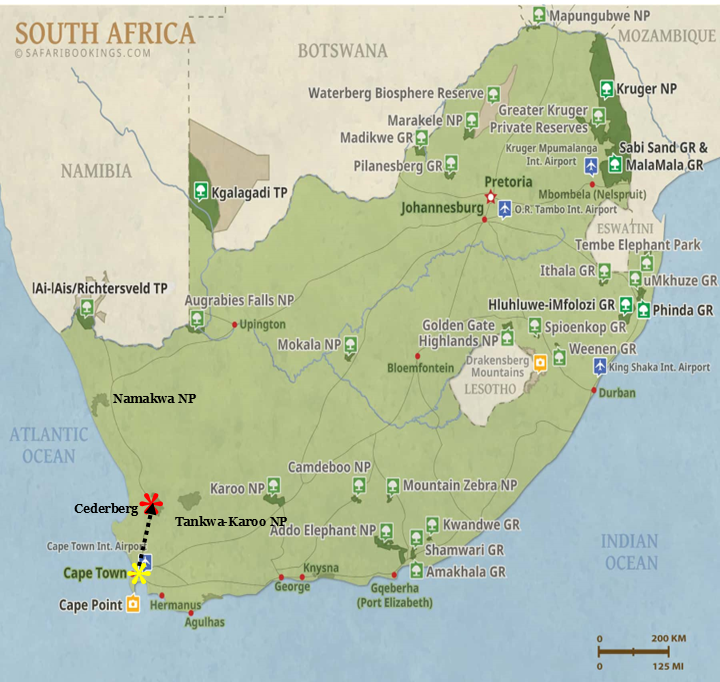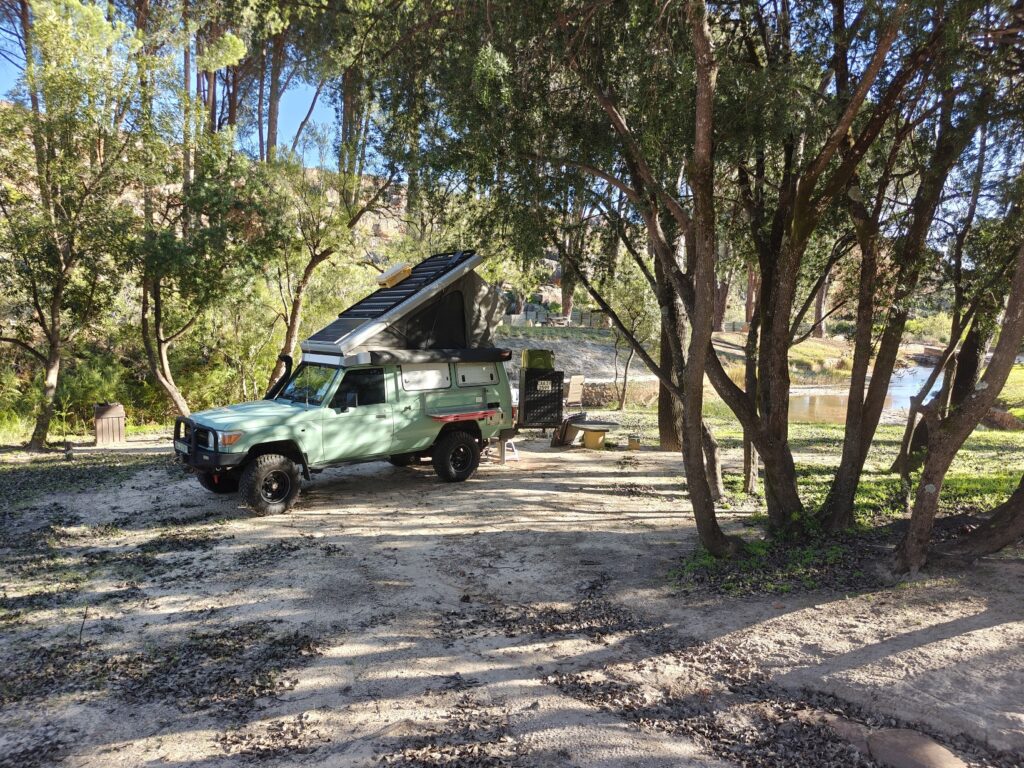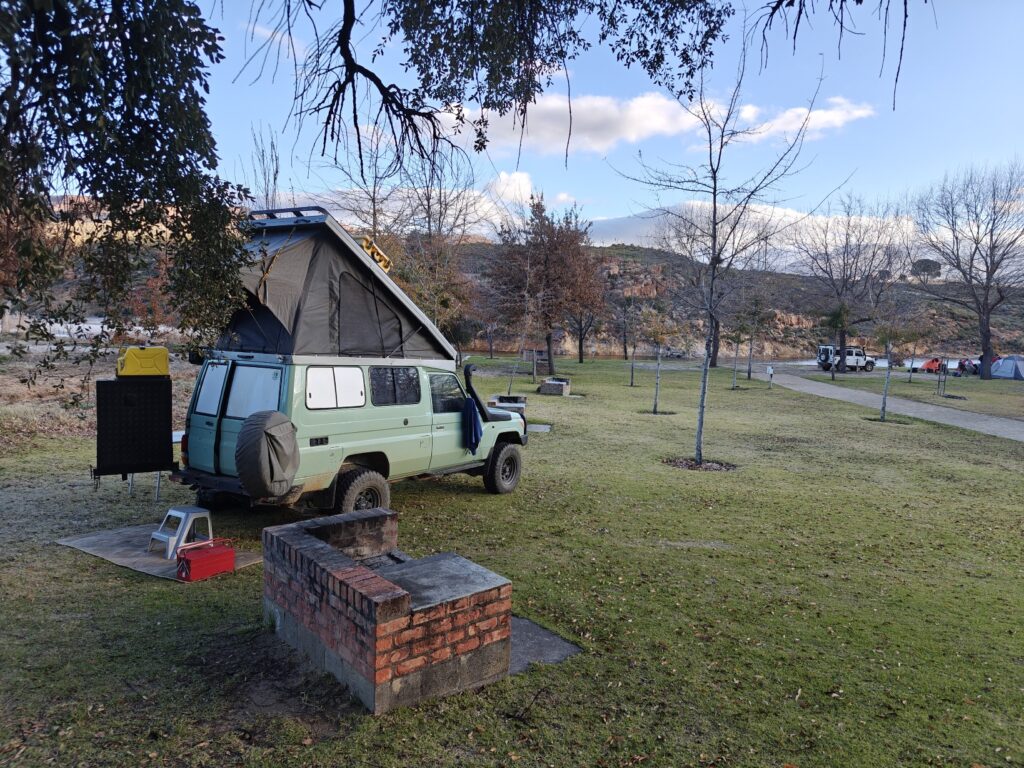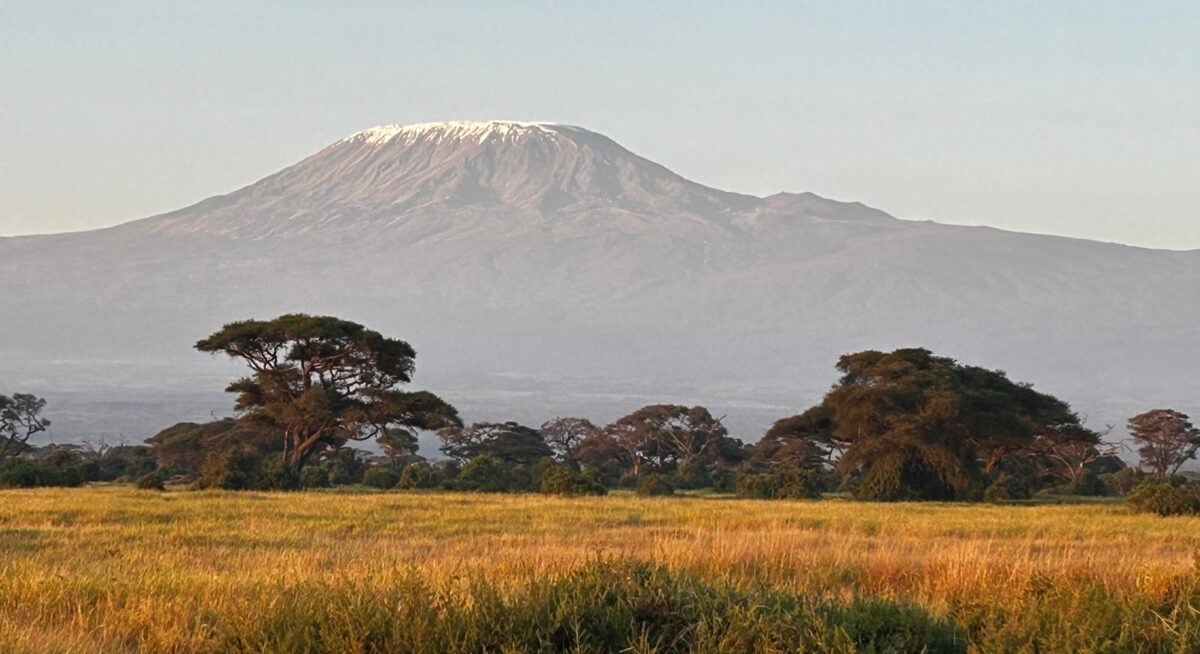It’s been 2 weeks since I posted my first entry for this year’s trip with a general overview of my plans for this year. Sorry it has taken me so long to post again – some of you have contacted me with concerns for my well-being given my total silence – but I spent the first full week in Cape Town getting some vehicle work done and making several upgrades to my vehicle accessories (e.g., new refrig, house battery, air compressor, etc.). Unfortunately, my business in Cape Town is still not finished, as I have yet to receive my updated, valid vehicle registration, which I need in order to leave the country and later return. SO, to kill some time, I just spent the last 5 days exploring the Cederberg Mountains, which are a rugged, mountainous area located in the Western Cape province of South Africa, roughly 200-300 km north of Cape Town.

The Cederberg mountains are part of the much larger greater Karoo semi-desert in southern Africa, which I introduced and described in the first leg of my journey in 2023. The Cederbergs are known for their dramatic sandstone formations, including the famous Maltese Cross and Wolfberg Arch, as well as for the numerous San rock paintings found within the area – all very reminiscent of the American southwest both in geological landform and ancient rock art (of the Anasazi or Ancient Puebloan People). The core of the Cederberg was designated as a wilderness area in 1973.
The mountains are home to the endangered Clanwilliam cedar tree, which is how the mountains got their name. This tree, once numerous in the Cederberg, was largely cut down for furniture and construction and now only survives at the highest elevations and most rugged locations. Although my hikes took me to some of the highest elevations and rugged places, I never saw this tree (or any other for that matter), so it must be extremely rare.
The vegetation of the Cederberg is dominated by high-altitude (or mountain) fynbos, which is predominantly low shrubland and heathland – again, very reminiscent of the arid American southwest in structure – and is found mostly along the coastal belt in southern and southwestern South Africa. Unlike the semi-desert of the America Southwest, however, the fynbos floristic biome is a major hotspot for plant diversity, with a large percentage of the plants being endemic (found nowhere else).
I camped my first nighs on the northern end of the Cederberg at a site called Kliphuis, which which situated along a stream in a small oasis of trees, and I had the place to myself.

I truly love South Africa this time of year because the Parks, campgrounds and trails are largely empty, and although the nights get quite cold and the mornings are a bit challenging to wake up to, the days are glorious with temperatures around 60 degree Fahrenheit – perfect hiking temperatures.
I did a wonderful half-day hike from Kliphuis, which was a perfect introduction to the Cederberg. Didn’t see much wildlife, except for a Klipspringer (dwarf antelope fond of rocky terrain), but the flowers and rocks were spectacular and I saw a really cool waterfall that cascaded down the cliff but flowed behind the rock in places and then emerged to fall over a ledge only to disappear again and then reemerge again below – very cool – it may not be too late to redesign my patio waterfall back home!
The following day was off-and-on rainy so I took advantage of the “bad” weather and took a long, mostly 4×4 trail over several passes along the eastern flank of the Cederberg and ended up down south at a campsite called Sanddrif, where I spent three nights. Along the way I stopped at an archeological site that feature some very cool San (Bushman) rock art dated to 5,000 years ago, along with some spectacular caves used by the San during that time, before they were extirpated by European colonists a couple hundred years ago.

From Sanddrif, I did an all-day hike that took me up about 3,000 feet to a spectacular rock formation called Wolfberg Crack and then on to Wolfberg Arch, a huge arch similar to those found in Utah’s Arches National Park. Traversing the “crack” was an adventure in rock scrambling and climbing. There were several hand-over-hand pull-ups on ropes to ascend boulders and walls, crawling on my belly through narrow rock tunnels, squeezing through extremely narrow clefts in the rock walls, and lots of climbing through slots in the rocks. It was an exhilarating experience that I wish I could have shared more with you, but I was mostly focused on surving the traverse that I took very few pictures – sorry!
The following day I drove a short distance to another “Nature Reserve” (more on this in a bit) called Kronriver and did another all-day hike up a mountain range and along the ridge past a couple of peaks in a big loop. Had the entire mountain range all to myself so far as I could tell. Again, as with my previous hikes and the entirety of the Cederberg, this area was a rock-lovers playground, with spectacular rock formations everywhere I looked. Got lots of inspiration for additional rock features at our home in Colorado.
I learned that the Cederberg has a core national Wildernes Reserve, but the bulk of the area is carved up into numerous private “Nature Reserves”. I put Nature Reserve in quotes, because what I observed was a series of working farms, mostly vineyards and fruit orchards (apples and pears I think), one located in each major valley bottom, each having a lodge and restaurant, cabins or chalets and a campground, and surrounded by tens of thousands of acres of wild, steep mountainous terrain with a few hiking trails and rock climbing features. You have to pay to access each “Nature Reserve” separately. These “farms”, of course, are all white-owned and run, and use cheap black labor to do all the farm labor. I am not quite sure if these “Nature Reserves” are truly motivated to conserve nature or simply labeled as such as a way to market themselves and attract paying tourists, or perhaps they get a tax break by designating themselves “Nature Reserves”. I visited 3 different “Nature Reserves” on my few hikes and paid separately for each hike.
OK, that’s all the rambling from me about my time in the Cederberg. Since I spent 4 full days hiking and driving in the Cederberg, I took a lot of pictures. Consequently, I put together a 7 minute slide show of my trip, depicting most of the things I described above. Enjoy!
The Cederberg slideshow
New Species:
- Karoo prinia
- Yellow canary
- African black duck
- Cape rockjumper
- Spotted eagle owl

Hey Kevin,
Sorry you had to be delayed reoutfitting gear for the Dragon, however your hikes and vistas were spectacular! Thanks for sharing them. Travel safely, –Paul
on the road again! Looking forward to vicarious travels.. Quite spectacular mountains reminiscent of the Americansouthwest., Which begs the question, is there Mountain Biking there? 🙂 I understand there is a lot of Mountain Biking in South Africa in general. Safe travels. Rick Romano.
Wow! The landscape looks beautiful with all that rock. I would have enjoyed all those hikes and scaling all the rock climbs (maybe not the narrow squeezes though!). Love you!